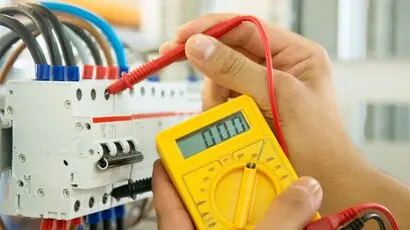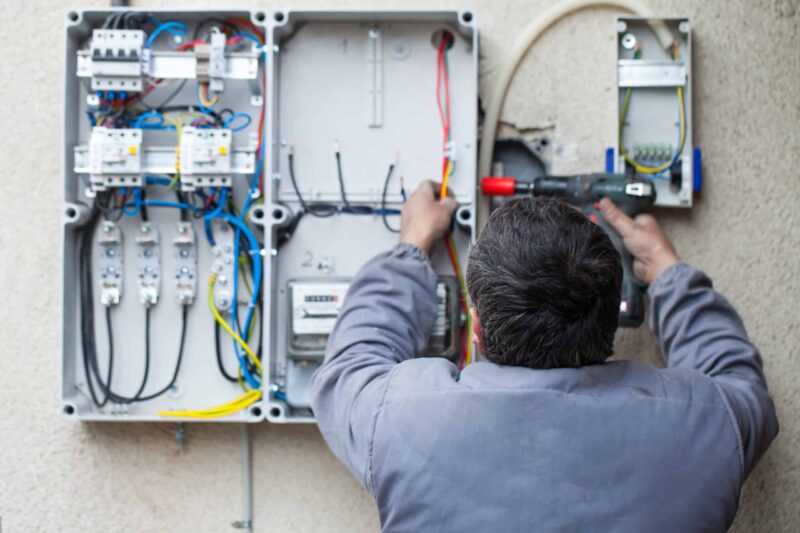Typical Electrical Issues Every House Owner Ought To Know About
Property owners frequently come across various electrical troubles that can affect security and capability. Problems like flickering lights and stumbled breaker are a lot more usual than numerous recognize. These circumstances can show deeper electrical worries that warrant focus. Comprehending the dangers and signs related to out-of-date circuitry and dead electrical outlets is necessary. What measures can be required to stop these problems? Exploring these usual electrical problems can expose important insights for maintaining a safe home environment.

Flickering Lights: Reasons and Solutions
Why do some home owners experience flickering lights? Flickering lights can be a common annoyance, typically suggesting underlying electrical concerns. One key reason is loosened or damaged links within lights or wiring, which can result in recurring power supply. Additionally, utilizing high-wattage home appliances on the very same circuit might cause voltage fluctuations, resulting in flickering or dimming. Another potential concern is an overloaded circuit, where too numerous devices draw power at the same time, straining the electrical system. Furthermore, out-of-date or degraded circuitry can add to inconsistent electrical flow. In many cases, flickering lights might signify a trouble with the home's electrical panel or solution line. Homeowners must address flickering lights immediately to prevent possible threats. Solutions might consist of tightening up connections, redistributing device lots, or consulting a licensed electrical expert for a thorough assessment. Identifying the root cause can aid assure a stable and secure electrical system in the home.
Tripped Circuit Breakers: What You Need to Know
Have home owners ever before wondered what causes their breaker to trip all of a sudden? This typical concern often emerges from an overload of electrical circuits, where also numerous gadgets attract power simultaneously. In such situations, the breaker functions as a safety and security mechanism, disrupting the flow of electrical energy to stop getting too hot and potential hazards. One more regular reason is a short circuit, which happens when an online cable calls a neutral cable, developing a rise of electrical power that journeys the breaker. Ground faults can also result in stumbled breakers; these occur when a live wire touches the ground or a based surface area, presenting significant security dangers. Homeowners must on a regular basis analyze their use of high-wattage appliances to stay clear of overwhelming circuits. Furthermore, understanding the function of breaker can aid them respond suitably throughout a journey, guaranteeing their home remains well-kept and risk-free.
Out-of-date Circuitry: Threats and indications
Out-of-date wiring can present considerable dangers to home owners, typically going unnoticed up until problems arise. Residences developed before the 1980s may still have light weight aluminum circuitry or knob-and-tube systems, which are no more considered safe. Signs of out-of-date circuitry consist of flickering lights, regularly tripped breaker, or melting scents near electrical outlets. These indicators may suggest that the electrical system is loaded down or deteriorating.Additionally, property owners could discover swelter marks around buttons or outlets, which can show getting too hot. The danger of electric fires significantly enhances with out-of-date electrical wiring, as these systems were not designed to handle modern-day electrical tons. Property owners are encouraged to have their circuitry inspected on a regular basis, specifically when restoring or including brand-new appliances. By recognizing these indicators early, they can avoid harmful circumstances and maintain a safer living atmosphere. Updating to existing electrical requirements is a positive action in preserving home safety and effectiveness.
Often Blown Fuses: Troubleshooting Tips
Regular blown integrates can show underlying electric concerns that might stem from outdated circuitry or overloaded circuits. Property owners experiencing this issue must initially identify the appliances linked to the impacted circuit. It is advisable to stay clear of using several high-wattage devices at the same time, as this can cause circuit overload. If the trouble persists, inspecting the circuit box for indicators of wear or damages is vital; a defective fuse box may need replacement.Additionally, looking for loose connections within the circuit can help protect against future occurrences. House owners must also confirm that the merges being utilized are of the proper amperage, as using an inaccurate fuse can exacerbate the issue. If these fixing tips do not settle the issue, seeking advice from a qualified electrical expert is suggested to evaluate the electric system even more. Attending to these worries without delay can aid minimize dangers and ensure the safety and security of the home's electrical framework.
Dead Outlets: Common Reasons and Solutions
When a home owner experiences a dead outlet, it can often provide frustration and complication. A number of usual reasons might bring about this concern. One regular perpetrator is a stumbled circuit breaker, which can be conveniently reset. If any breakers are in the off placement, house owners need to inspect their electric panel to inspect. Another opportunity is a faulty electrical outlet itself, which might require substitute. In addition, loose electrical wiring connections within the electrical outlet can interrupt power flow, making inspection essential.Sometimes, the issue might come from an overloaded circuit, especially when numerous tools are connected. In such instances, rearranging the electrical tons can deal with the concern. Property owners ought to likewise take into consideration the age of their electrical wiring; older systems might require updates to satisfy contemporary electric demands. If these actions do not rectify the situation, speaking with an accredited electrician is a good idea to ensure safety and correct medical diagnosis.
Electric Shocks: When to Be Worried
Exactly how can home owners establish whether an electrical shock warrants issue? Property owners ought to initially examine the severity and context of the shock. A moderate fixed shock, typically really felt when touching he said steel things, is normally harmless and typical. Nevertheless, if the shock happens while engaging with a plugged-in device or outlet, it may suggest a much more severe issue.The area and regularity of the shocks are vital. Repeated shocks from the same source, particularly in damp locations like washrooms or kitchen areas, could signify defective electrical wiring or insufficient grounding. Property owners ought to additionally take into consideration the feeling of the shock; a jolt that creates discomfort or contraction is a lot more worrying than a simple tingle.If there's any uncertainty, it is recommended to consult a certified electrician. Ignoring prospective electric dangers can bring about significant safety and security threats, consisting of fire or extreme injury.
Overloaded Circuits: Avoidance and Precaution
Overloaded circuits pose substantial dangers in household setups, often bring about electrical fires or equipment damage (Sydney Level 2 Electrician). House owners must identify the signs of an overloaded circuit, such as often tripped breakers or dimming lights. Implementing preventative safety and security practices can assist reduce these threats and ensure a more secure living setting
Acknowledging Overloaded Circuits
What signs suggest that a circuit may be strained? Property owners ought to be cautious for several vital my blog indications. Often tripped breaker or blown merges suggest too much load on the circuit. Lowering or flickering lights, especially when various other home appliances remain in use, can indicate an insufficient power supply. Additionally, outlets or buttons that feel cozy to the touch might indicate overheating, a possible fire hazard. Uncommon buzzing audios from electrical outlets likewise call for attention, as they can symbolize electric issues. Finally, if home appliances run inefficiently or stop working to begin, it might suggest an overloaded circuit. Acknowledging these indications early can assist prevent serious electrical troubles and advertise a much safer home atmosphere.
Preventive Safety And Security Practices
To maintain a safe and effective electric system, home owners need to apply preventative safety and security practices that address possible circuit overloads. One efficient procedure is to stay clear of attaching way too many devices to a solitary electrical outlet, as this can go beyond the circuit's ability. Making use of power strips with integrated breaker can help disperse power safely. Home owners must likewise consistently evaluate cables and home appliances for damages and replace any kind view it of defective devices immediately. It is critical to ensure that breaker are functioning appropriately and to be familiar with the overall wattage being made use of in each circuit. Additionally, seeking advice from an accredited electrical expert for periodic examinations can identify potential problems before they intensify, guaranteeing a safer living setting and prolonging the life expectancy of electrical systems.
Often Asked Inquiries
How Often Should I Have My Electrical System Inspected?
Regular examinations of electric systems are recommended every 3 to five years. Home owners must consider extra constant checks if they experience issues, embark on improvements, or live in older homes to guarantee security and compliance.
Can I Fix Electric Issues Myself or Work With a Professional?

What Are the Signs of an Electrical Fire Danger?
Signs of an electrical fire danger consist of regularly tripped breaker, flickering lights, melting smells, stained electrical outlets, or warm, buzzing wires. House owners must continue to be cautious and seek professional aid if any one of these indications exist.
Just how Do I Know if My Home Requirements an Electric Upgrade?
To figure out if a home requires an electric upgrade, indicators include frequent breaker journeys, obsolete wiring, inadequate outlets, flickering lights, and the existence of older electric panels, showing possible security threats and inefficiency.
Exist Particular Security Tips for Do It Yourself Electric Job?
When thinking about do it yourself electrical job, one need to constantly switch off power, use insulated devices, validate circuit capability, follow regional codes, and consult experts for complex jobs to assure safety and prevent crashes. Another potential concern is an overloaded circuit, where as well lots of gadgets attract power all at once, straining the electrical system. The risk of electric fires substantially boosts with outdated electrical wiring, as these systems were not made to handle modern-day electrical tons. Constant blown fuses can show underlying electrical issues that might stem from out-of-date electrical wiring or overloaded circuits. To maintain a risk-free and efficient electrical system, property owners should apply preventive safety practices that deal with possible circuit overloads. Sydney Level 2 Electrician. Indicators of an electric fire risk consist of regularly tripped circuit breakers, flickering lights, burning smells, stained outlets, or warm, buzzing wires
Comments on “5 simple ways to stop light instability, according to a Level 2 Electrician Sydney”